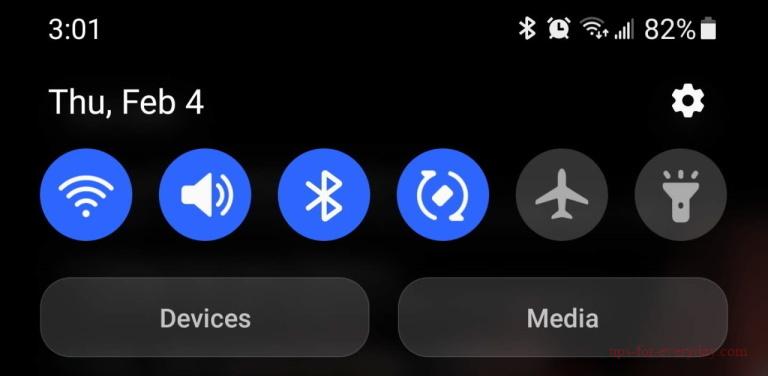Toggle Airplane Mode or Reboot Your Phone
Phones get confused sometimes. Don't we all? Your phone is not constantly searching for the best signal. That would kill your battery. So sometimes, especially if you're moving, it may be holding on to an old idea of network availability.
The quickest way to fix this is to toggle airplane mode on, wait about 10 seconds, and then toggle it off again. That makes your phone check again to see what networks are available. Airplane mode is generally in your phone's Control Center and Android's Quick Settings panel, accessed by swiping down from the top of your screen.
In a few cases, you may even have to reboot your phone. That's needed when crossing international borders, or sometimes when crossing into or out of roaming carrier zones.

You're Holding It Wrong
Remember "antennagate?" The iPhone 4 was mocked for having antenna bands that were easily blocked by your hand. Well, that still happens sometimes. You might be accidentally blocking whatever antenna on your phone is in use, or the one closest to or most appropriately pointed at the cell tower.
The ultimate way to test this is to just hold up your phone with two fingers, blocking as little of the case as possible. Phone cases, by the way, are designed not to block cellular signal, but removing the case from your phone can't hurt.
Get a New SIM (or Clean Yours)
If you've been with your carrier for a long time, your SIM card may not contain the data to connect to the latest network systems. Its contacts may even be dirty or wearing down, causing intermittent failures. You can start by popping your SIM out and cleaning its metal surface with a disinfectant wipe, or a cotton swab and a little bit of rubbing alcohol.
You can also ask your carrier's customer service reps for a fresh, latest-model SIM card. Use the carrier's website online chat—don't go to a store. Say you're having network problems and want to try a new SIM card. They should send you one for free.
Change Your G
3G, 4G, and 5G all have different properties and, sometimes, come off different towers. I've seen instances where a network will demand that a phone try to grab a weaker, more faraway signal just so it can get a "5" in the status bar. This isn't just marketing; the newer a network your phone is on, the more efficiently it uses carrier resources, so it's worth it to the carriers to have as many devices on the newest networks possible.
Unfortunately, that sometimes means individual devices get stuck with very weak connections. It's worth toggling between different available network modes in case your carrier's logic is privileging newer systems over more usable ones. This is especially advised for Verizon customers.
On the Phone, go to Settings SIM cards and mobile networks SIM card settings Preferred network type and you should at least be able to choose between 5G (or "global"), 4G, 3G. Depending on your network, you may also be able to go down to 2G.
Use Wi-Fi
Are you using Wi-Fi to the maximum extent your phone is capable of? The best network for your phone may be your home network. That includes for calling; almost all phones right now support Wi-Fi calling, which you can generally activate in the cellular or calling settings on your phone. Improving your home Wi-Fi with a mesh system may be easier than trying to eke out a cellular signal where you live.
Our roundup of The Best Wi-Fi Mesh Network Systems can help you make a decision here. We can even help you set up your new Wi-Fi system.
Check Your Bands (and Get a New Phone)
Carriers add new frequencies to their networks every few years. If your phone is very old, it may not connect to the newest ones, even on 4G.
Here's how to cross reference which bands you need at your location. Go to CellMapper.net, choose your carrier and location, and look for your nearest towers. Clicking on them should give you the frequency bands you're hitting. Then you can go to FrequencyCheck.com and see which bands operate on your phone model. If those numbers don't match up, your phone can't hear what the tower is broadcasting; time for a new one.
Buy a Booster
This is the most expensive solution, but also the most effective. Network signal boosters collect weak signals using large antennas and then rebroadcast them within your house or car. They start at about $200 for a one-device, portable unit, and go up to $1,200 or more for whole-home systems. However, they make a huge difference, often turning a single bar of wobbly signal into a full-strength, speedy connection.
